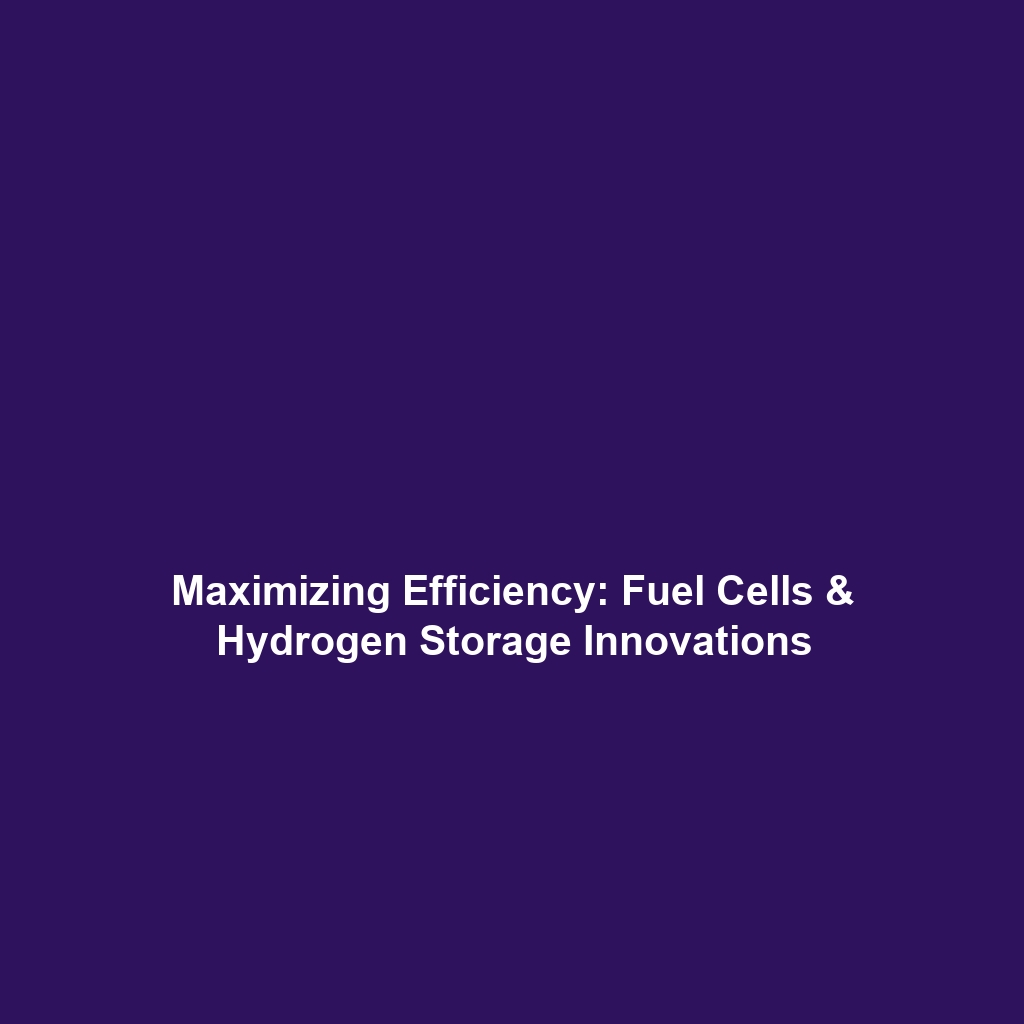Fuel Cells and Hydrogen Storage: Boosting Efficiency in Clean Energy
Introduction
Fuel cells and hydrogen storage technologies represent a pivotal area within the field of clean energy, significantly impacting sustainability efforts worldwide. As industries shift towards more eco-friendly alternatives, the integration of advanced nanomaterials offers an innovative approach to enhance the efficiency and performance of these technologies. This article delves into the significance of fuel cells and hydrogen storage within the broader context of advanced nanomaterials, emphasizing their role in meeting global energy demands while minimizing environmental impact.
Key Concepts
Fuel cells convert chemical energy directly into electrical energy, boasting high efficiency and zero emissions when fueled by hydrogen. Hydrogen storage, on the other hand, involves various methods for storing hydrogen effectively and safely for use in fuel cells and other applications. Below are some major concepts related to these technologies:
Principles of Fuel Cells
- Electrochemical Reaction: In a fuel cell, hydrogen reacts with oxygen to produce electricity, water, and heat.
- Types of Fuel Cells: Different types of fuel cells, such as Proton Exchange Membrane (PEM) and Solid Oxide Fuel Cells (SOFC), vary in temperature and efficiency.
Hydrogen Storage Methods
- Compressed Gas: Storing hydrogen in high-pressure tanks is a common method due to its simplicity and established technology.
- Metal Hydrides: Advanced nanomaterials can enhance the storage capacity and release rates of metal hydride systems.
Applications and Real-World Uses
The influence of fuel cells and hydrogen storage on clean energy applications is profound. Here are notable examples:
- Automotive Industry: Fuel cell vehicles (FCVs) utilize hydrogen fuels in the presence of nanomaterials to improve efficiency and reduce emissions significantly.
- Portable Electronics: Compact fuel cells could power devices, enabling longer usage times without substantial weight increases.
- Grid Storage Solutions: Integrating hydrogen storage with renewable energy sources allows for energy to be stored and utilized effectively, balancing supply and demand.
Current Challenges
While fuel cells and hydrogen storage present a promising outlook, several challenges must be addressed:
- Cost: High production costs of fuel cells and hydrogen storage systems hinder widespread adoption.
- Infrastructure: Lack of sufficient fueling stations limits the practicality of fuel cell vehicles.
- Performance: Current hydrogen storage methods still face limitations regarding energy density and safety.
Future Research and Innovations
Future research in fuel cells and hydrogen storage aims to leverage advanced nanomaterials further, leading to potential breakthroughs:
- Next-Gen Catalysts: Innovations in catalyst design can reduce reliance on precious metals, making fuel cells more affordable.
- Advanced Storage Materials: Developing materials that enhance hydrogen absorption capacities and decrease weight could revolutionize storage approaches.
- Sustainable Hydrogen Production: Research into renewable methods for hydrogen generation promises to yield cleaner, cost-effective ways of producing this invaluable resource.
Conclusion
In summary, fuel cells and hydrogen storage technologies are vital components of the clean energy landscape, particularly when combined with advanced nanomaterials to boost efficiency. Addressing current challenges and exploring innovative research avenues could significantly advance their applicability and sustainability. For those interested in further exploring this topic, consider reading our article on future applications of nanomaterials in energy and discover how various advancements continue to shape our clean energy future.

Leave a Reply